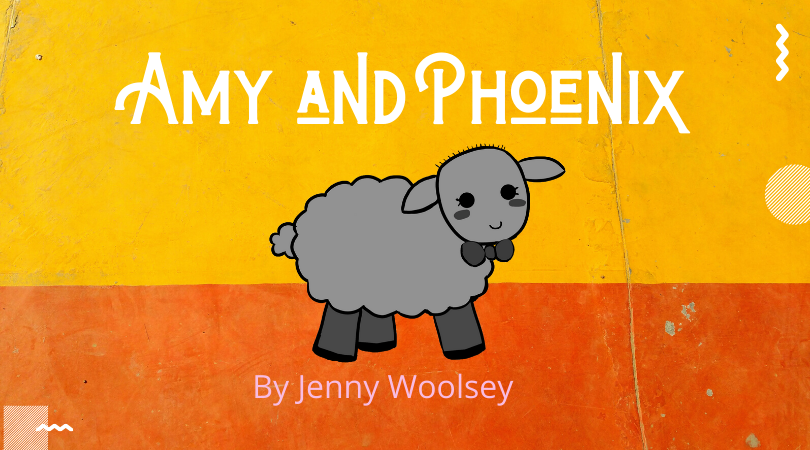Amy and Phoenix Themes

Farming & Agriculture

Amy and Phoenix is set on a farm, which has a range of animals. It explores daily life and the realities of farm life.
What children will learn about farming in Amy and Phoenix:
1. Some of the difficulties such as predators attacking the stock e.g. foxes, and survival of the fittest.
2. Where food, such as milk, comes from (it doesn’t come from a milk bottle); also pork comes from pigs etc. In association with reading the story, children can be taught about production chains.
3. About the role of the farmer and the point that anything that is raised or grown on a farm depends on him or her. Many of the activities Mr Pringle does in the story relate to caring for the animals, feeding and watering, cleaning, building and fixing things. The chores the children have on the farm such as collecting the eggs are also highlighted.
4, Animals need food, shelter and proper care to grow healthy and happy. The story shows the role of a vet.
5. The story highlights the life cycles of farm animals. Being on a farm brings the joys of new life and the sadness of lost life.
6. Weather affects farming on a daily basis though farmers have no control over. Rain is extremely important but too much is never good. Extreme heat or extreme cold has it affect on everything and everyone on a farm.
RSPCA/Animal Welfare

In the story, Dad considers sending Phoenix to the RSPCA farm. This can lead to discussions and research on what animal welfare organisations or charities do.
The RSPCA’s mission is to prevent cruelty to animals by actively promoting their care and protection. To achieve this, the RSPCA works to enforce animal cruelty laws and prompt new legislation where required. The RSPCA also operates animal care and adoption facilities, and seeks to raise community awareness regarding the humane treatment of animals. In addition, the RSPCA works with government and industry to establish standards for animal care.
The RSPCA (Royal Society for the Prevention of Cruelty to Animals) works closely with the farming sector to make a positive impact on the lives of farm production animals by providing an environment that meets their behavioural and physiological needs.
https://www.rspca.org.au/what-we-do
Advocating or Standing Up for Beliefs

In the story Amy is adamant that she is going to save Phoenix from being put down and then once she achieves this she wants to save him from going to the RSPCA farm. With the help of her sister Amy is able to.
Children usually learn how to write a persuasive letter in English, but there are other ways children can advocate or stand up for an issue they are passionate about. The story lends itself to brainstorming methods and even trying some of them out in the real world.
This website link has some great ideas – from acts of kindness towards other children, to visiting the local animal shelter and volunteering, to writing to local politicians about issues they feel passionate about.
https://raisinglifelonglearners.com/advocate-for-others/
This website explains the different types of advocacy:
https://www.thewellproject.org/hiv-information/how-be-advocate-yourself-and-others
Friendship with Animals

Amy absolutely loves the animals at the farm. She can even talk to them like Doctor Doolittle. At the beginning of the story Amy has a bond with Kobie the working dog, and she then develops a very special bond with Phoenix, the newborn disabled lamb. Her dad says he doesn’t have pets on the farm which distresses Amy and she works to change this. The story highlights the benefits of children caring for animals or having pets.
Here are some of the benefits:
• Children who grow up in homes with pets have less risk of developing common allergies and asthma.
• Playing with dogs may help lower blood pressure.
• Kids with pets get outside more—to go for walks, run and play—and enjoy all the associated health benefits.
• Pet owners require fewer doctor’s visits.
• Emerging readers often feel more comfortable reading aloud to a pet.
• Nurturing a pet is an acceptable way for boys to “parent play”—to practice being caregivers.
• Feeding and caring for a pet encourages childhood responsibility.
• Children with pets display improved impulse control, social skills and self-esteem.
• Sharing the love and care of a family pet forges an additional common bond among siblings.
• Cuddling a pet reduces stress, loneliness and anxiety.
Read more: http://www.oprah.com/relationships/10-reasons-pets-are-good-for-kids#ixzz5cp3ya0iB
Disabled Animals

Like humans, animals can be born with disabilities. They can be born without limbs, or have facial differences, or skin conditions etc. If you google ‘disabled animals’ many photos will pop up. Having a lamb with three legs in the story, can enable discussions on difference, diversity and disabilities in humans as well as in animals.
Amy makes an interesting comment in the story where she says, ‘If I was born with one leg you wouldn’t have killed me.’ Children in the younger age would not need to be taught about what has happened to people with disabilities throughout history, but older students could touch on this topic.
Animals like people can cope with their disabilities and can thrive.
http://mentalfloss.com/article/26830/8-disabled-animals-triumphed-over-adversity
Cyber safety

In Amy and Phoenix, Hannah who is Amy’s sister, uploads the video of Phoenix and the other lambs to YouTube, and it goes viral. The media then becomes involved. Having this element in the story allows for discussions on the pros and cons of YouTube. With the older children some discussions could be had on social media, instagram etc. and the positives and negatives of being popular. Discussions about how to remain safe on the internet should also be included when reading the story. There are many great resources on the internet to help.
https://kidshelpline.com.au/kids/issues/being-safe-internet

